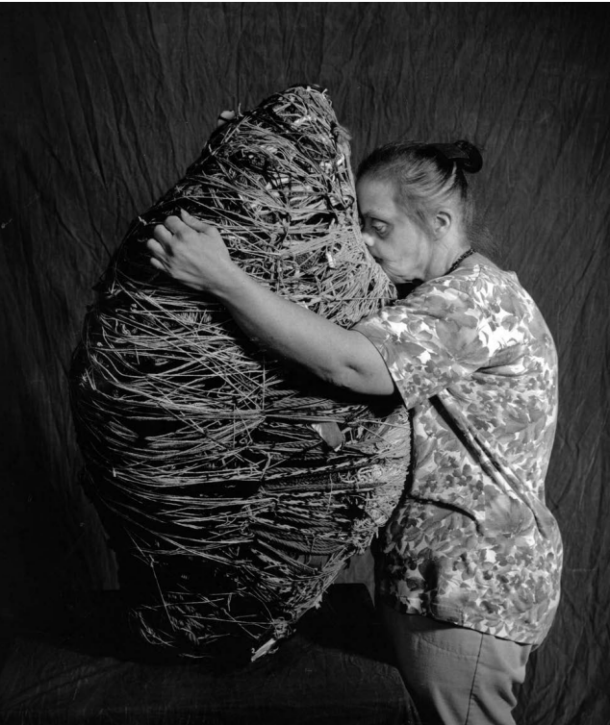This is a piece I originally included in FRESH SHEET, The Newsletter a year ago. I’m reposting it here because I want to link to it in this week’s newsletter.
CT
BODIES NEAR ENOUGH TO TOUCH
This isn’t breaking news. I stumbled upon fabric sculptor Judith Scott’s work — and her story — by accident.
I’m sharing them because I find them both so compelling.
Fraternal twins, Judith and Joyce Scott were born in Columbus, Ohio in 1943. Judy had Down Syndrome. Joyce did not.
When they were little, Judy and Joyce were inseparable, wrapped in a secret world of rituals and backyard play. But Judy was also deaf, the condition was undiagnosed, and that contributed to the assessment that she was “uneducable”. When the girls were seven, doctors advised Judy’s parents to commit her to an institution. They did, without telling Joyce, who woke up one morning to find that her twin had disappeared.
In her memoir Entwined, Joyce says that conditions at the hospital where Judy was incarcerated were “Dickensian.”
For the next 23 years, Judy’s family rarely visited or even spoke about her.
Finally, while talking on the phone with Judy’s social worker, Joyce, now an adult, learned for the first time that her sister was deaf. Something clicked. She recalled the intensely sensory nature of their bond as little girls, “how, together, we felt each piece of our world, how she tasted her world and seemed to breathe in its colors and shapes.”
Joyce assumed legal guardianship and brought Judith to Berkeley to live with her family.
Although Judith had never shown any interest in art, Joyce enrolled her in a program called Creative Growth in Oakland. Judith was not engaged by drawing, painting, or clay sculpture but, when fibre artist Sylvia Seventy delivered a lecture, Judith began to weave — relentlessly.
According to this piece on dailygood.org, “She started by scavenging random, everyday objects, anything she could get her hands on. ‘She once grabbed someone’s wedding ring, and my ex-husband’s paycheck, things like that,’ Joyce said. The studio would let her use nearly anything she could grab — the wedding ring went back to its owner — and then Judith would weave layer upon layer of strings and threads and paper towels if nothing else was available, all around the core object, allowing various patterns to emerge and dissipate.”
For the next 18 years, Judith, who died in 2005, wove eight hours a day, sometimes until her fingers bled.
The work that emerged is remarkable, vivacious in its use of colours and materials, and profoundly mysterious.
Judith Scott’s sculptures have been shown at and acquired by prestigious art institutions, including the Venice Biennale, the LA County Museum of Art, the Brooklyn Museum, and New York’s Museum of Modern Art.
For me, this work speaks to the elemental joys of texture, colour, and volume — and it arouses associations with love and human touch. In one of my favourite photos of Judith, she’s hugging a cocoon-like sculpture she created. Describing her early life with Judith, who never spoke, Joyce says, “There are no words, but we need none. What we love is the comfort of sitting with our bodies near enough to touch.”
PHOTO: Sculptor Judith Scott hugging one of her pieces.






0 Comments